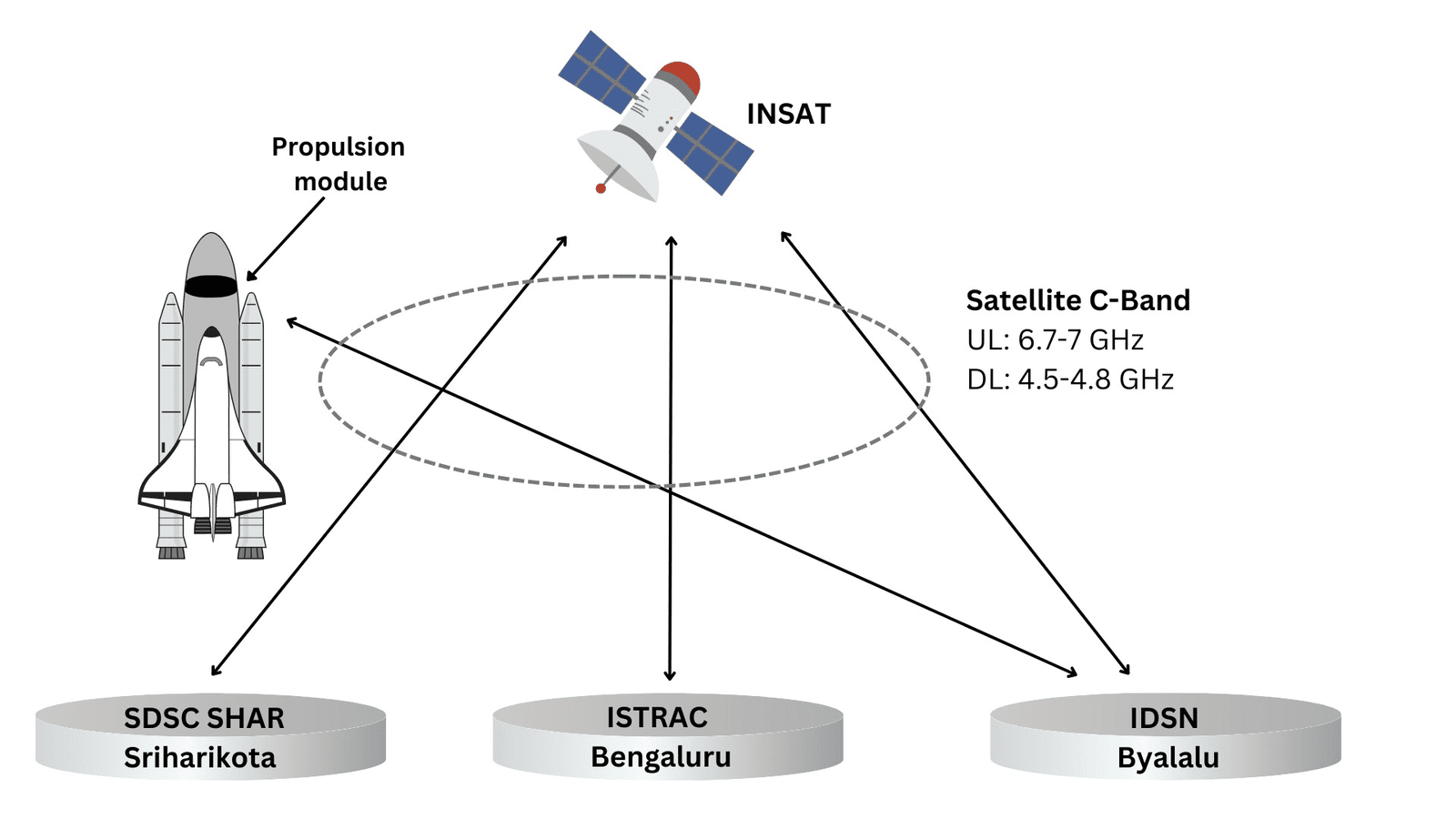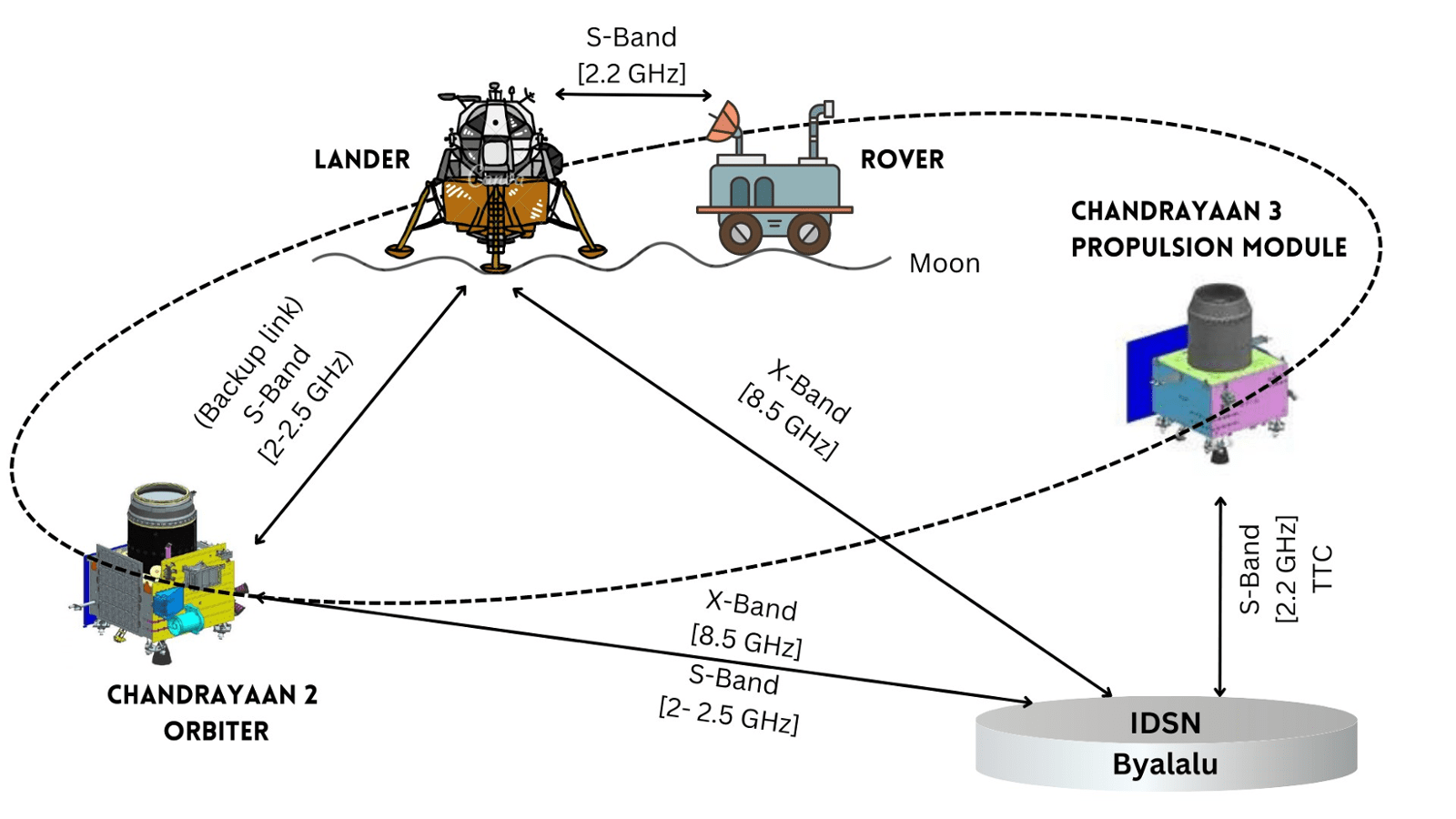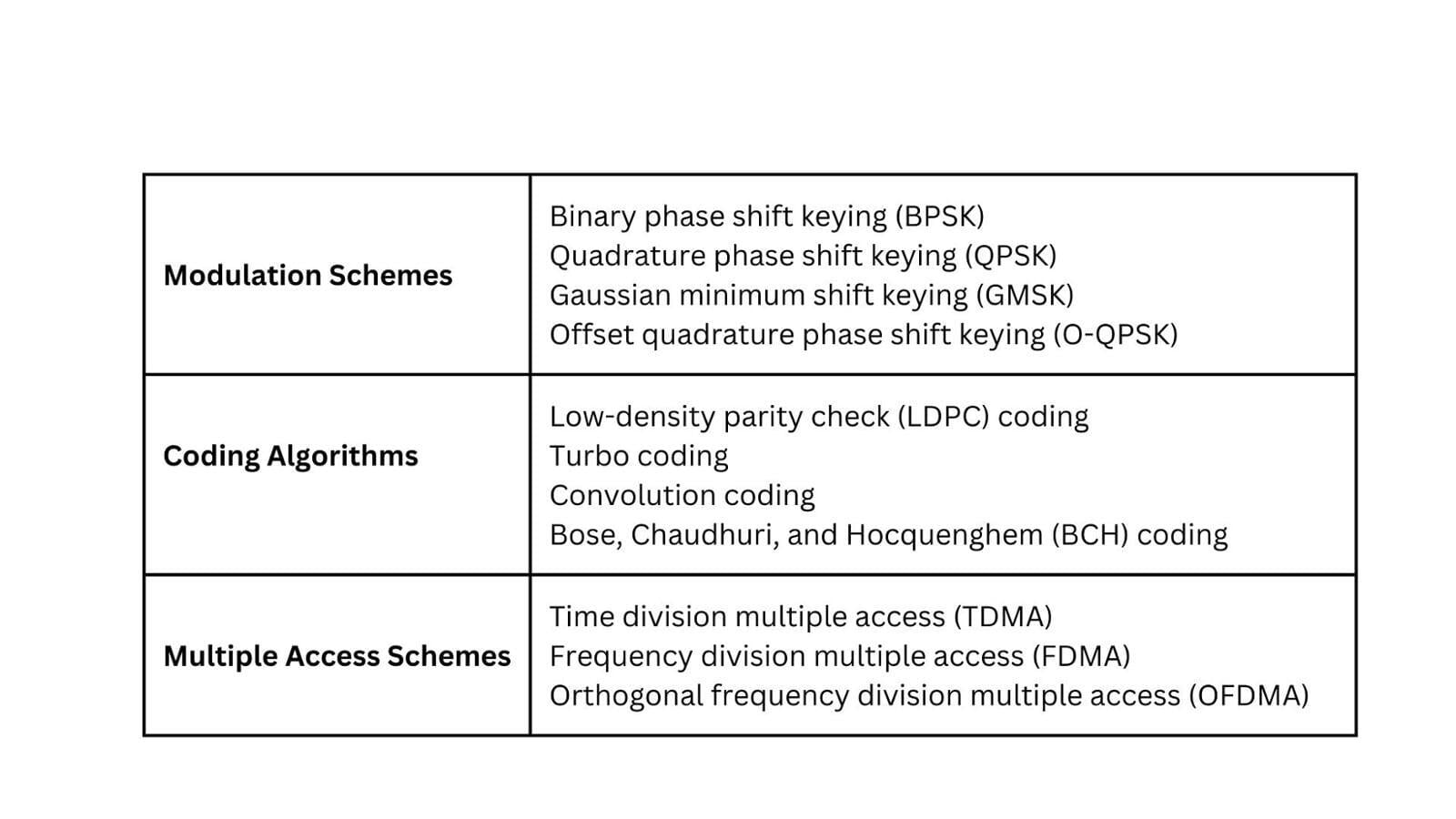Chandrayaan-3 is few weeks away before landing on the moon. At the time of this blog publication, the launcher has fully left the earth’s orbit and will be injected into Lunar orbit on Aug 1, 2023, as per the plan. In this blog let us look at the communication system that connects various parts of the mission.
Officially called Chandrayaan-3 or launch vehicle mark-3 on the 4th operational mission (LVM3-M4) on the lunar mission. At a high level, the communication system can be categorized into 2 parts.
- Communication during the journey from source (earth) to destination (moon)
- Communication after reaching the destination (moon)
Figure 1 shows the communication between ground stations and the launch vehicle during the journey to the moon.

FIGURE-1: Communication system among ground stations, satellite and LVM3-M4
ISRO Telemetry, Tracking and Command Network (ISTRAC) is the center of this communication system. ISTRAC establishes constant and continuous communication with Sriharikota (launch site) and the tracking center in Byalalu which is part of the Indian Deep Space Network (IDSN). The 3 systems are not co-located. Hence communication among these happens through the Indian National Satellite System (INSAT) which is a series of geostationary satellites utilized for such communication purposes. Figure 1 shows three ground stations while the telemetry, tracking, and command (TTC) happens through numerous such ground stations spread across the world.
Figure 2 shows the communication system when the integrated module comprising of lander, rover, and propulsion module have reached their respective positions on and around the moon.

FIGURE-2: Communication system among ground, orbit and moon-based systems
Let us start from the rover. Rover which moves on the moon’s surface can communicate only with the lander. The Lander module soft lands on a specified site on the moon surface and deploys the rover. Both these modules were carried up to the final 100km circular polar moon’s orbit by a propulsion module. The propulsion module with its job done of releasing the lander module (and rover) will stay in the lunar orbit and make future discoveries as per the design.
Lander can communicate both with the rover and directly to IDSN (ground station). Chandrayaan-2 orbiter is still circling the moon. Chandrayaan-3 lander has been designed to communicate with this Chandrayaan-2 orbiter. This will act as a backup link in case the communication between the lander and IDSN breaks down. The propulsion module collects important data from space through its numerous sensors and transmit to IDSN. TTC represents command/control operation and other communication bands are for talking to ground station are for sending data like high-resolution images from the moon.
At the baseband level, well known modulation, coding, and multiple access schemes are used as tabulated in Table 1.

TABLE 1: Modulation, Coding and Multiple Access Schemes